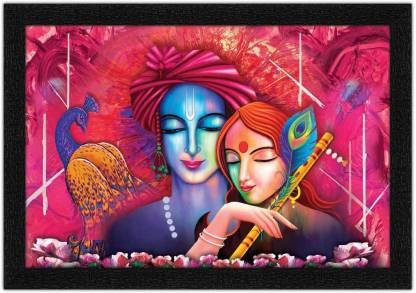Where does Radha stands in Krishna's Life is a very debatable question. Krishna’s critics have even futilely tried to vilify him by giving a perverted form to the stories of Radha-Krishna.

Who is this Radha whose name has been associated with ‘Shyam’ or ‘Krishna’ as ‘Radhe-Shyam’ or ‘Radhe-Krishna’? Some illustrate her as a sister, while others describe her as Krishna's wife by marriage. Yet others state that Radha was married to someone else, but even then, she was having sensuous relations with Krishna and had attained the acme by loving Krishna through her servitude. So, chequered descriptions/depictions of her were made by various people as per their understanding and attitude. Radha has been placed at such a high level on the scale of devotion that it seems that Radha and Krishna are inseparable. One cannot even imagine the existence of Krishna sans Radha. But the most surprising thing is that there is no passing reference to any individual named ‘Radha’ in any of the endorsed scriptures that depict the Life of Krishna. The most ratified and accepted book describing the various minute nuances of Krishna's character is the ‘Harivansh.’ There is no mention of the name Radha in this ‘Harivansh.’ The validated text that has a vivid commentary on Krishna's Life's social and political facets is the ‘Mahabharat.’ There is no allusion of Radha even in this Mahabharat scripture. Radha is mentioned only in the Purana (ancient text) named ‘Bramhavaivart.’ In the hierarchy of the Puranas, this particular Purana is considered to be on the lowermost rung. Therefore, it seems as if Radha has been mentioned metaphorically. The writers of ancient scriptures have given Radha an exalted place in Krishna's life to increase the glorification of Devotional Love. Later on, it has set a precedent that the moment one utters Krishna’s name, Radha pops into the memory.
The most beautiful and most beloved of all gopis was Radha. The love of Radha and Krishna is a symbol of an eternal love affair between the devoted mortal and the Divine. Thus, Krishna has also come to be known as ‘RADHESH,’ the lord of Radha. Radha’s yearning for the union with her beloved Krishna is the soul’s longing for spiritual awakening. Radha represents the state of devotion and the consequent merging with the divine. Some scriptures also mention that Krishna always told her, ‘You, Radha are my own self.’ Hence we can look at the character of Radha and her story as a metaphor for this realization.
Was Krishna's Life full of debauchery? No, in fact, it was the epitome of the ideal domestic life. Did Krishna marry so many thousands of women to satisfy his lust and let others burn in the fire of unfulfilled desires? Had that been the case, He would have never achieved the position of a Complete Incarnation that he has acquired in the Indian culture, which believes in the waning of desires as everything that it is based on. Krishna had married his first eight wives, namely Rukmini, Satyabhama, Jambavati, Kalindi, Bhadra, Mitravinda, Satya (Nagnajiti), Lakshmana, for political reasons, and he had taken the rest of the thousand women as wives to avoid blemishing humanity. He had freed these young women from the hellish captivity of Narkasur, but they had nowhere to go. Society would not accept them, and they would have had to lead a life of destitution. Hence Krishna set an example in front of the world by marrying them to give them an honourable reputation in society. If his life is examined thoroughly, it can be seen that how can a man who is engrossed in so many endeavours ever find leisurely time for luxuries? Krishna has shown the world through his own domestic life how an ideal husband should be.

Some so-called intelligent people also make useless allegations against Krishna, such as he was lustful, a thief, effeminate and characterless. These people also state in the same breath: Krishna had indeed accomplished great deeds, but his scurrilous behaviour and his Raas Leela (Dance of Divine Love) with the Gopis of Vrajbhoomi have stigmatized his Life. In India, modesty and character are the most prized above everything else. No matter how many great feats a person has accomplished, the Indian people would still spit on his name and never give him a place of honour if he is characterless. Hence, if Krishna’s character were not chaste and indulged in lust and luxury as alleged, then today, after about five thousand years, he would not have gained a steadfast place in the hearts of the Indian populace.


